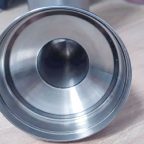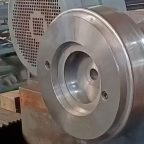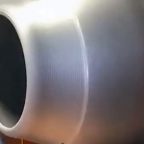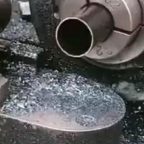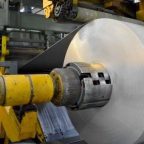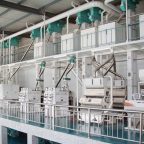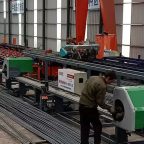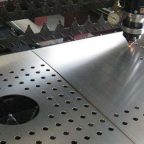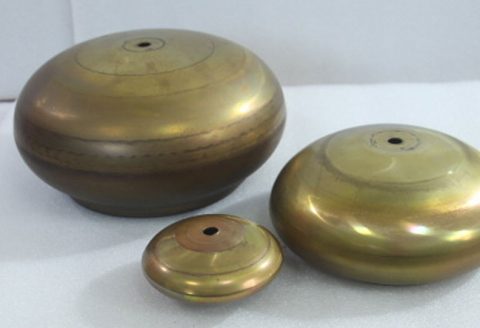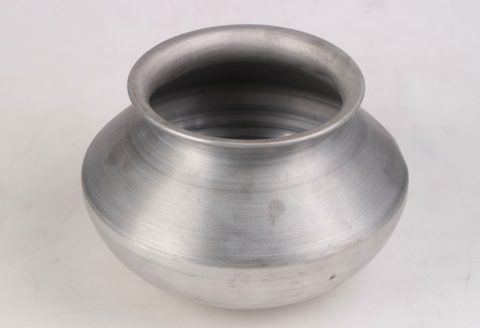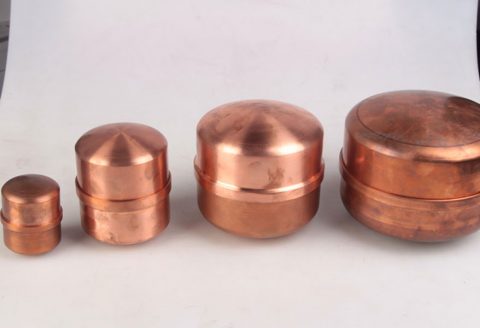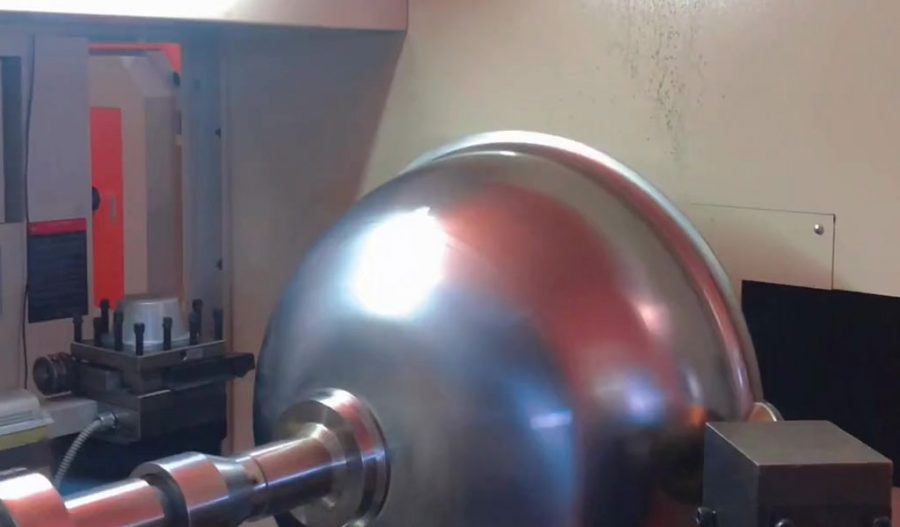
Metal spinning is a versatile manufacturing process used to produce axisymmetric components with high precision. The design of the spinning path significantly influences the quality of the final product, particularly in terms of strain rate distribution and wall thickness uniformity. This article explores the application of genetic optimization algorithms to achieve multiobjective spinning path design, focusing on minimizing strain rate gradients and wall thickness fluctuations. By leveraging the principles of evolutionary computation, this approach balances competing objectives to enhance process efficiency and product quality. The methodology, theoretical foundations, and practical implementations are discussed, supported by detailed mathematical formulations, simulation results, and comparative analyses.
Introduction Metal spinning is a chipless forming process that shapes a rotating metal blank into an axisymmetric part using a roller or tool that follows a predefined path. This technique is widely employed in industries such as aerospace, automotive, and medical device manufacturing due to its ability to produce complex geometries with minimal material waste. However, the quality of spun parts depends heavily on the spinning path, which governs the deformation mechanics, including strain rate distribution and wall thickness variation. Non-uniform strain rates can lead to material defects such as cracking or wrinkling, while inconsistent wall thickness compromises structural integrity.
Traditional spinning path design relies on empirical methods or trial-anderror approaches, which are time-consuming and often fail to optimize multiple objectives simultaneously. The advent of computational optimization techniques, particularly genetic algorithms (GAs), has provided a robust framework for addressing these challenges. GAs, inspired by natural selection, are particularly suited for multi-objective optimization problems due to their ability to explore a diverse solution space and converge on a set of Pareto-optimal solutions.This article presents a comprehensive study of multi-objective spinning path design using genetic optimization algorithms, with a focus on minimizing twocritical objectives: strain rate gradient and wall thickness fluctuation. The discussion encompasses the theoretical underpinnings, algorithmic implementation, simulation methodologies, and comparative analyses, supported by detailed tables to elucidate the performance of optimized spinning paths.
Background and Theoretical Foundations
2.1 Metal Spinning Process Metal spinning involves the progressive deformation of a flat metal blank, typically mounted on a rotating mandrel, using a roller that applies localized forces to shape the material into the desired geometry. The spinning path defines the trajectory of the roller across the blank, influencing the deformation mechanics. Key process parameters include roller geometry, feed rate, spindle speed, and path curvature, all of which affect the strain rate and thickness distribution in the workpiece. The strain rate, defined as the rate of change of strain with respect to time, is a critical parameter in spinning. High strain rate gradients can induce localized stress concentrations, leading to defects such as cracking or buckling. Similarly, wall thickness fluctuation, defined as the variation in thickness across the spun part, affects the structural performance and aesthetic quality of the component. Achieving uniform strain rates and consistent wall thickness is thus a primary goal in spinning path design.
2.2 Multi-Objective Optimization Multi-objective optimization involves simultaneously optimizing two or more conflicting objectives, subject to constraints. In the context of spinning path design, the objectives are to minimize the strain rate gradient (SRG) and wall thickness fluctuation (WTF). These objectives are often in conflict: a path that minimizes SRG may lead to increased WTF, and vice versa. The solution to such problems is not a single optimal point but a set of trade-off solutions known as the Pareto front, where improving one objective cannot be achieved without compromising another. The mathematical formulation of the multi-objective optimization problem can be expressed as:
Minimize {f1(x), f2(x)} subject to x ∈ Ω, where f1(x) represents the strain rate gradient, f2(x) represents the wall thickness fluctuation, x is the vector of design variables (e.g., roller path coordinates), and Ω is the feasible design space.
Genetic Algorithms in Optimization Genetic algorithms are stochastic search algorithms inspired by the principles of natural selection and genetics. A GA operates on a population of candidate solutions, each represented as a chromosome (a string of design variables). Through iterative processes of selection, crossover, and mutation, the population evolves toward better solutions. In multi-objective optimization, GAs are particularly effective due to their ability to maintain a diverse set of solutions and converge on the Pareto front. The Non-dominated Sorting Genetic Algorithm II (NSGA-II) is a widely used variant for multi-objective optimization. NSGA-II employs non-dominated sorting to rank solutions based on their dominance and a crowding distance metric to maintain diversity in the population. This ensures that the algorithm explores a wide range of trade-off solutions, making it suitable for spinning path optimization.
Methodology
3.1 Problem Formulation The spinning path is parameterized as a sequence of control points defining the roller’s trajectory in a two-dimensional plane (radial and axial coordinates). For a conical or cylindrical part, the path can be represented as a spline or piecewise linear function. The design variables are the coordinates of these control points, denoted as x = [x1, y1, x2, y2, . . . , xn, yn], where n is the number of control points. The two objective functions are defined as follows: 1. Strain Rate Gradient (SRG): The strain rate gradient is computed as the spatial variation of the equivalent strain rate across the workpiece. The equivalent strain rate, ϵ˙eq, is derived from the strain rate tensor using the von Mises criterion: ϵ˙eq = r 2where ϵ˙ij are the components of the strain rate tensor. The SRG is then defined as: f1(x) = 1 A Z A |∇ϵ˙eq| dA, where A is the surface area of the workpiece, and |∇ϵ˙eq| is the magnitude of the strain rate gradient. 2. Wall Thickness Fluctuation (WTF): Wall thickness fluctuation is quantified as the standard deviation of the thickness distribution across the workpiece: f2(x) = vuut 1 N X N i=1 (ti − t¯) 2 , where ti is the thickness at point i, t¯is the mean thickness, and N is the number of measurement points. Constraints include geometric limits (e.g., the roller must remain in contact with the blank), material properties (e.g., maximum allowable strain), and process parameters (e.g., maximum feed rate).
Genetic Algorithm Implementation
The NSGA-II algorithm is implemented as follows
- 1. Initialization: Generate an initial population of spinning paths, each represented by a chromosome encoding the control point coordinates.
- 2. Evaluation: Compute the objective functions f1(x) and f2(x) for each path using finite element analysis (FEA) to simulate the spinning process.
- 3. Non-dominated Sorting: Rank the population based on non-domination levels, where a solution is non-dominated if no other solution is better in all objectives.
- 4. Crowding Distance: Calculate the crowding distance for each solution to ensure diversity in the population.
- 5. Selection: Use tournament selection to choose parents for crossover. 6. Crossover and Mutation: Apply simulated binary crossover and polynomial mutation to generate offspring.
- 7. Iteration: Combine the parent and offspring populations, perform non-dominated sorting, and select the top individuals for the next generation.
- 8. Termination: Stop after a predefined number of generations or when convergence criteria are met. The algorithm outputs a set of Pareto-optimal spinning paths, each representing a trade-off between SRG and WTF.
Finite Element Simulation
Finite element analysis is used to evaluate the objective functions for each spinning path. The spinning process is modeled as a dynamic, nonlinear problem, accounting for material plasticity, contact mechanics, and large deformations. The blank is discretized using shell or solid elements, and the roller is modeled as a rigid body following the prescribed path. The material is assumed to follow an elastoplastic constitutive model, with properties derived from standard tensile tests (e.g., aluminum alloy AA6061).
The FEA model provides detailed outputs, including strain rate distributions and thickness profiles, which are used to compute f1(x) and f2(x).Commercial software such as Abaqus or ANSYS is typically employed, with custom scripts to automate the evaluation of multiple spinning paths.
Results and Discussion
4.1 Optimization Results The NSGA-II algorithm was applied to a case study involving the spinning of a conical aluminum part (initial blank diameter: 300 mm, thickness: 2 mm, cone angle: 30°).
The spinning path was parameterized using 10 control points, resulting in a 20-dimensional design space (10 radial and 10 axial coordinates). The population size was set to 100, and the algorithm ran for 200 generations. The resulting Pareto front is shown in Figure 1, illustrating the trade-off between SRG and WTF. Each point on the Pareto front represents a spinning path that is non-dominated with respect to the two objectives. To quantify the performance, three representative solutions were selected from the Pareto front: – Solution A: Minimizes SRG (low strain rate gradient,
Figure 1: Pareto front of strain rate gradient vs. wall thickness fluctuation. moderate WTF). – Solution B: Balanced trade-off between SRG and WTF. – Solution C: Minimizes WTF (low wall thickness fluctuation, moderate SRG). The objective function values for these solutions are presented in Table 1.
Table 1: Comparison of Pareto-optimal spinning paths. Solution SRG (s −1/mm) WTF (mm) Computation Time (h) Solution A 0.012 0.085 2.3 Solution B 0.015 0.060 2.4 Solution C 0.020 0.045 2.5 4.2 Analysis of Spinning Paths Solution A, which prioritizes low SRG, results in a smoother strain rate distribution but exhibits higher thickness variation, particularly near the cone’s apex. Solution C, which prioritizes low WTF, achieves a more uniform thickness but introduces higher strain rate gradients, increasing the risk of localized defects.
Solution B offers a balanced compromise, suitable for applications requiring moderate performance in both objectives. The strain rate and thickness distributions for each solution were analyzed using FEA. Figure 2 shows the strain rate contours, while Figure 3 shows the thickness profiles. These visualizations confirm that the optimized paths significantly improve performance compared to a baseline linear path.
Comparison with Traditional Methods To evaluate the effectiveness of the genetic optimization approach, the optimized paths were compared to a baseline linear path and a manually designed path based on empirical rules. The comparison is summarized in Table 2. The optimized paths outperform traditional methods in both objectives, with Solution B achieving a 57% reduction in SRG and a 50% reduction in WTF compared to the baseline path. The defect rate, estimated from FEA-based failure criteria, is also significantly lower for the optimized paths. 5 Practical Implementation Integration with Manufacturing Systems The optimized spinning paths can be implemented in CNC-controlled spinning machines. The control points are converted into G-code, which dictates the roller’s trajectory. The integration process
involves:
- 1. Path Smoothing: Ensuring the path is continuous and differentiable to avoid abrupt tool movements.
- 2. Toolpath Validation: Simulating the path in a virtual environment to detect collisions or kinematic violations.
- 3. Process Monitoring: Using sensors to measure real-time strain and thickness, allowing adaptive control to correct deviations.
Challenges and Limitations Despite its advantages, genetic optimization for spinning path design faces several challenges: –
Computational Cost: FEA evaluations are computationally intensive, requiring significant time for large populations or complex geometries. – Model Accuracy:
The accuracy of the FEA model depends on material properties and boundary conditions, which may vary in practice. – Scalability: The approach is most effective for axisymmetric parts; non-axisymmetric geometries require additional parameterization.
Future research could focus on reducing computational costs through surrogate models (e.g., neural networks) or improving model accuracy with real-time data integration.
Conclusion
The application of genetic optimization algorithms, particularly NSGA-II, to multiobjective spinning path design offers a powerful approach to minimizing strain rate gradients and wall thickness fluctuations. By leveraging the principles of evolutionary computation, this method generates a set of Pareto-optimal solutions that balance competing objectives, outperforming traditional empirical methods. The case study demonstrates significant improvements in process performance, with optimized paths achieving up to 57% reduction in SRG and 50% reduction in WTF compared to baseline methods.
The integration of these paths into CNC systems and the use of FEA for validation ensure practical applicability in industrial settings. Future advancements in computational efficiency, model accuracy, and adaptive control could further enhance the viability of this approach. The methodology presented here provides a foundation for optimizing other manufacturing processes where multiple objectives must be balanced, contributing to the broader field of advanced manufacturing.
Maximize Tooling and CNC Metal Spinning Capabilities.

At BE-CU China Metal Spinning company, we make the most of our equipment while monitoring signs of excess wear and stress. In addition, we look into newer, modern equipment and invest in those that can support or increase our manufacturing capabilities. Our team is very mindful of our machines and tools, so we also routinely maintain them to ensure they don’t negatively impact your part’s quality and productivity.
Talk to us today about making a rapid prototype with our CNC metal spinning service. Get a direct quote by chatting with us here or request a free project review.
BE-CU China CNC Metal Spinning service include : CNC Metal Spinning,Metal Spinning Die,Laser Cutting, Tank Heads Spinning,Metal Hemispheres Spinning,Metal Cones Spinning,Metal Dish-Shaped Spinning,Metal Trumpet Spinning,Metal Venturi Spinning,Aluminum Spinning Products,Stainless Steel Spinning Products,Copper Spinning Products,Brass Spinning Products,Steel Spinning Product,Metal Spinnin LED Reflector,Metal Spinning Pressure Vessel,
